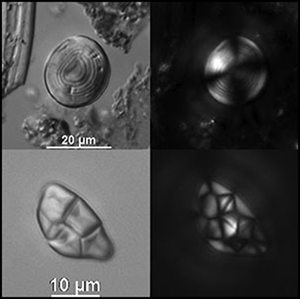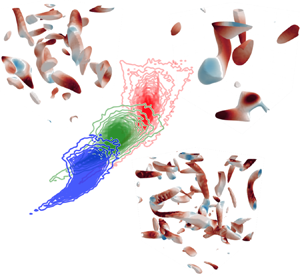Refine listing
Actions for selected content:
1416742 results in Open Access
Reconstructing Late Neolithic animal management practices at Kangjia, North China, using microfossil analysis of dental calculus
- Part of
-
- Article
-
- You have access
- Open access
- HTML
- Export citation
ARTWORK: DES CLARKE
-
- Article
- Export citation
Conducting Socio-Legal Research in a Conflict Area during a Pandemic: Reflections and Lessons for Future Researchers
-
- Journal:
- Journal of African Law / Volume 68 / Issue 2 / June 2024
- Published online by Cambridge University Press:
- 01 April 2024, pp. 231-244
- Print publication:
- June 2024
-
- Article
-
- You have access
- Open access
- HTML
- Export citation
The cult of Stephen in Jerusalem. Inventing a patron martyr. By Hugo Méndez. (Early Christian Studies.) Pp. xiv + 175 incl. 2 maps. Oxford–New York: Oxford University Press, 2022. £70. 978 0 19 284699 0
-
- Journal:
- The Journal of Ecclesiastical History / Volume 75 / Issue 2 / April 2024
- Published online by Cambridge University Press:
- 04 April 2024, pp. 360-362
- Print publication:
- April 2024
-
- Article
- Export citation
Frontiers of Gender Equality: Transnational Legal Perspectives. Edited by Rebecca J. Cook. Philadelphia: University of Penn Press, 2023. Pp. ix, 558. Index.
-
- Journal:
- American Journal of International Law / Volume 118 / Issue 2 / April 2024
- Published online by Cambridge University Press:
- 29 April 2024, pp. 388-394
- Print publication:
- April 2024
-
- Article
- Export citation
ADDRESSING THE INTENSITY OF CHANGES IN THE PREHISTORIC POPULATION DYNAMICS: POPULATION GROWTH RATE ESTIMATIONS IN THE CENTRAL BALKANS EARLY NEOLITHIC
-
- Journal:
- Radiocarbon / Volume 66 / Issue 2 / April 2024
- Published online by Cambridge University Press:
- 04 April 2024, pp. 280-294
- Print publication:
- April 2024
-
- Article
-
- You have access
- Open access
- HTML
- Export citation
SCRIBAL PRACTICE - (K.) Bentein, (Y.) Amory (edd.) Novel Perspectives on Communication Practices in Antiquity. Towards a Historical Social-Semiotic Approach. (Papyrologica Lugduno-Batava 41.) Pp. x + 198, figs, ills. Leiden and Boston: Brill, 2023. Cased, €138. ISBN: 978-90-04-52651-8.
-
- Journal:
- The Classical Review / Volume 74 / Issue 2 / October 2024
- Published online by Cambridge University Press:
- 01 April 2024, pp. 378-380
- Print publication:
- October 2024
-
- Article
- Export citation
PSC volume 57 issue 2 Cover and Back matter
-
- Journal:
- PS: Political Science & Politics / Volume 57 / Issue 2 / April 2024
- Published online by Cambridge University Press:
- 26 April 2024, pp. b1-b2
- Print publication:
- April 2024
-
- Article
-
- You have access
- Export citation
Data-driven nonlinear turbulent flow scaling with Buckingham Pi variables
-
- Journal:
- Journal of Fluid Mechanics / Volume 984 / 10 April 2024
- Published online by Cambridge University Press:
- 01 April 2024, R4
-
- Article
-
- You have access
- Open access
- HTML
- Export citation
The Effect of Education on Support for International Trade: Evidence from Compulsory-Education Reforms
-
- Journal:
- International Organization / Volume 78 / Issue 4 / Fall 2024
- Published online by Cambridge University Press:
- 18 November 2024, pp. 800-822
- Print publication:
- Fall 2024
-
- Article
-
- You have access
- Open access
- HTML
- Export citation
Composition and paragenesis of daqingshanite from the Kamthai carbothermalite, Rajasthan, India
-
- Journal:
- Mineralogical Magazine / Volume 88 / Issue 4 / August 2024
- Published online by Cambridge University Press:
- 01 April 2024, pp. 400-411
-
- Article
-
- You have access
- Open access
- HTML
- Export citation
German Practice in International Law 2019 by Stefan Talmon [CUP, Cambridge, 2022, xxviii + 467pp, ISBN: 978-1-316-51461-0, £170 (h/bk)]
-
- Journal:
- International & Comparative Law Quarterly / Volume 73 / Issue 2 / April 2024
- Published online by Cambridge University Press:
- 03 May 2024, pp. 548-549
- Print publication:
- April 2024
-
- Article
- Export citation
History of Science and the History of Catholicism and Colonization - Sacred Habitat: Nature and Catholicism in the Early Modern Spanish Atlantic. By Ran Segev. University Park: Pennsylvania State University Press, 2023. Pp. 213. $129.95 cloth.
-
- Journal:
- The Americas / Volume 81 / Issue 2 / April 2024
- Published online by Cambridge University Press:
- 03 October 2024, pp. 342-343
- Print publication:
- April 2024
-
- Article
- Export citation
Evaporation of acoustically levitated bicomponent droplets: mass and heat transfer characteristics
-
- Journal:
- Journal of Fluid Mechanics / Volume 984 / 10 April 2024
- Published online by Cambridge University Press:
- 01 April 2024, A17
-
- Article
-
- You have access
- Open access
- HTML
- Export citation
WHEN IS THE SILTING-DISCRETENESS INHERITED?
- Part of
-
- Journal:
- Nagoya Mathematical Journal / Volume 256 / December 2024
- Published online by Cambridge University Press:
- 01 April 2024, pp. 905-927
- Print publication:
- December 2024
-
- Article
- Export citation
CJM volume 76 issue 2 Cover and Back matter
-
- Journal:
- Canadian Journal of Mathematics / Volume 76 / Issue 2 / April 2024
- Published online by Cambridge University Press:
- 03 May 2024, pp. b1-b2
- Print publication:
- April 2024
-
- Article
-
- You have access
- Export citation
Gedächtnis trifft Einleitung. Ein neuer Blick auf alte Fragen
-
- Journal:
- New Testament Studies / Volume 70 / Issue 2 / April 2024
- Published online by Cambridge University Press:
- 03 June 2024, pp. 131-148
- Print publication:
- April 2024
-
- Article
-
- You have access
- Open access
- HTML
- Export citation
Optimism in International Human Rights Law Scholarship
-
- Journal:
- American Journal of International Law / Volume 118 / Issue 2 / April 2024
- Published online by Cambridge University Press:
- 29 April 2024, pp. 374-387
- Print publication:
- April 2024
-
- Article
-
- You have access
- Open access
- HTML
- Export citation
AQY volume 98 issue 398 Cover and Front matter
-
- Article
-
- You have access
- Export citation
British Protestant missions and the conversion of Europe, 1600–1900. Edited by Simone Maghenzani and Stefano Villani. (Studies in Early Modern Religious Dissents and Radicalism.) Pp. xii + 289 incl. 15 figs. Abingdon–New York: Routledge, 2021. £36.99 (paper). 978 0 367 54611 3
-
- Journal:
- The Journal of Ecclesiastical History / Volume 75 / Issue 2 / April 2024
- Published online by Cambridge University Press:
- 04 April 2024, pp. 389-391
- Print publication:
- April 2024
-
- Article
- Export citation



